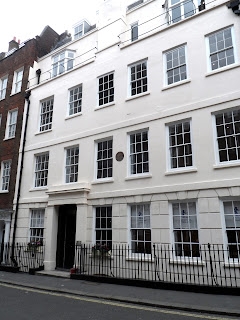I have never been a great believer in Karma
or Providence or Guardian Angels. But I do remember a day when a potentially
very awkward situation turned out OK due to a string of fortunate coincidences.
Things Fall Apart
The three of us – my wife Sue, 4-year-old
son David, and me – had been visiting my mother at Poole for a weekend and we
set off in mid-afternoon on the Sunday to drive home to Leicestershire. We had
not had the car very long, having bought it second-hand a few weeks before –
this was its first journey of any great distance since we had had it.
Shortly after starting off from Poole I
thought that the exhaust sounded a bit noisier than it should have done and I
made a mental note to get it checked when we got home. The noise got worse the further
we went.
As we drove through Newbury (this was
before the by-pass was built) there was a terrible clonking noise followed that
of something scraping along the road. Part of the exhaust had decided to part
company with the rest of the car.
Coincidence 1
This was that were on a journey of more
than 100 miles, mostly on fast roads in open countryside, and the disaster
befell us when we were going slowly through a town as we approached a
roundabout.
Coincidence 2
We stopped – it seemed the best idea! – and
asked a passer-by if there was anywhere that might be open on a Sunday
afternoon that could help us to sort out the car. This person happened to know
that there was a Kwik-Fit establishment just down the road to the right from
the roundabout we were approaching. For the uninitiated, Kwik-Fit specialise in
fitting and repairing exhaust systems.
We therefore gently limped round the
roundabout and set off towards Kwik-Fit, hoping that they were still open at
this time on a Sunday afternoon. Then things got even worse as the unsupported
part of the exhaust fell down and dug into the road surface, acting as a very
effective brake. We were now completely stuck and unable to move either
forwards or backwards.
Coincidence 3
This was not only that we were now on a
side road as opposed to the main route through Newbury, but that just at the
point where we ground to a halt there was a house where some guys were doing a
big restoration job. One of them noticed our plight and just happened to have a
pair of heavy-duty bolt-cutters in his hand. He was soon able to cut the
brackets that held the offending part of the exhaust in place, so we could
carry on to Kwik-Fit.
Coincidence 4
Kwik-Fit was still open and would be for
another hour!
However, the story now took another step
backwards because they did not have the part we needed in stock. It would have
to come from another depot. Normally this would have meant waiting until the
following day, but the guy on the desk noticed that we had a young child on
board and got on the phone to persuade a colleague to bring the part straight
away. Another colleague agreed to wait until the part arrived and stay on after
his normal finishing time in order to fit it.
This meant that we would have to wait for
up to an hour, and possibly longer, before we could get on our way. So what
could we do to keep a wide-awake 4-year-old happy during that time?
Coincidence 5
Just over the road from Kwik-Fit was a
children’s indoor play centre (slides, ball-pools and the like). It would not normally
have been open at this time but today it was playing host to a private party.
The party organiser was perfectly happy to let one more kid join in the fun, so
that was what happened. When it was time to leave, not surprisingly he didn’t
want to!
More than coincidence?
Needless to say, we were extremely grateful
to everyone who helped us out on what could have been a very awkward occasion
indeed. It just goes to show that, by lending a helping hand and going out of
your way, you can form part of a chain of fortunate happenings for somebody who
has a problem.
No – I’m not going any further than saying
that everything just fell into place on that day. I know that some people might
have seen the hand of Providence at play, but I think that’s just silly. There
have been plenty of other times in my life when the right thing has not
happened at the right time!
© John Welford







